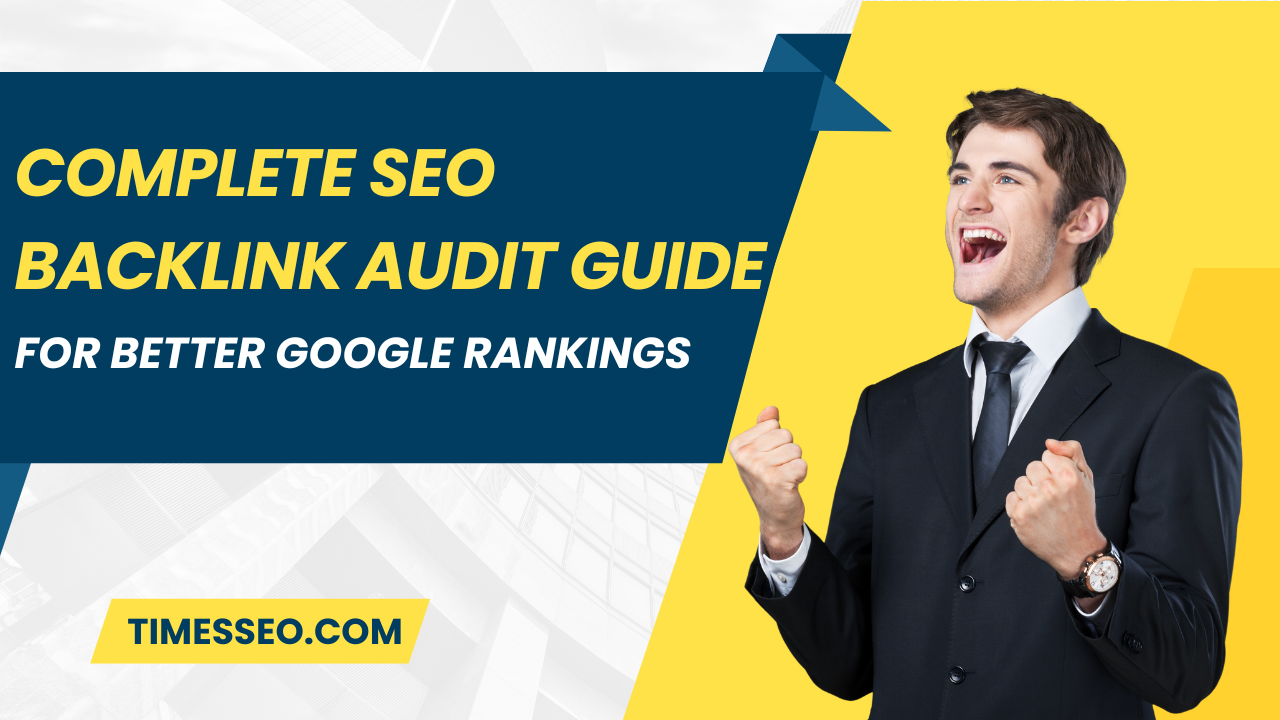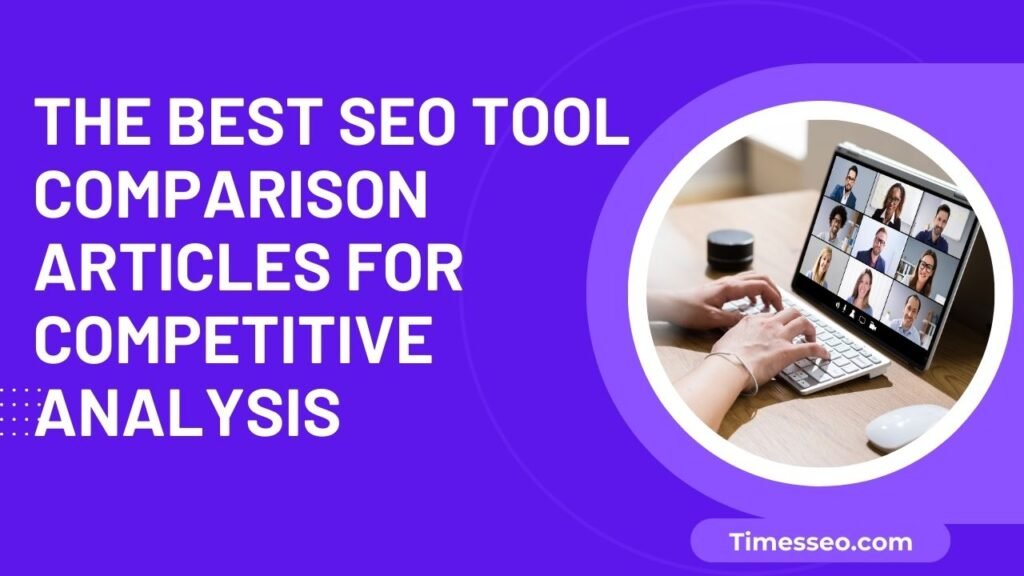
The Best SEO Tool Comparison Articles for Competitive Analysis
Explore the best SEO tool comparison articles designed for competitive analysis. Learn how to evaluate features, pricing, and performance to choose the right tools that give your business a competitive edge.
Table of Contents
Introduction
When it comes to winning in the search engine results pages (SERPs), knowing what your competitors are doing is half the battle. That’s where SEO tool comparison articles for competitive analysis come into play. These articles don’t just list tools; they guide readers through real insights, helping them pick the right tool for their business goals.
You wouldn’t just buy the first automobile you see if you were shopping for one. You’d compare mileage, features, and price. SEO tools work the same way, and comparison articles are the roadmap that helps digital marketers choose wisely.
Understanding Competitive Analysis in SEO
Competitive Analysis in SEO: What is it?
The practice of determining what your rivals are doing to improve their search engine rankings is known as competitive analysis. By analyzing their strategies, you can find gaps and opportunities.
Key metrics include:
- Organic keywords they rank for
- Backlinks pointing to their site
- Content quality and frequency
- Technical health of their website
Why SEO Tool Comparison Articles Matter
Not all tools are created equal. Some excel in backlinks, while others dominate in keyword research. A well-written SEO tool comparison article helps readers:
- Make informed choices about tools
- Trust your expertise as an unbiased reviewer
- Find your content organically when searching for tool comparisons
When done correctly, these articles foster relationships in addition to ranking.
The Role of SEO Tools in Competitive Analysis
Manually tracking competitor performance is nearly impossible. That’s why SEO tools exist. They automate data collection, track performance over time, and give actionable insights.
From keyword gaps to backlink profiles, these tools save hours of manual research and allow marketers to focus on strategy instead of raw data collection.
Types of SEO Tool Comparison Articles
There are a few ways to structure these articles:
- Side-by-side comparisons – Tool A vs. Tool B
- List-style comparisons – “Best SEO Tools for Small Businesses”
- Deep dives – Detailed breakdown of features, pricing, and performance
The key is clarity. Don’t overwhelm your reader with jargon—give them actionable takeaways.
Features to Compare in SEO Tools
When writing comparison content, focus on what actually matters to users:
- Keyword research depth and accuracy
- Backlink analysis strength
- Site audit tools for technical fixes
- Rank tracking for visibility
- Content optimization suggestions
- Pricing and ease of use
This checklist ensures you’re covering the features readers actually care about.
Top SEO Tools Commonly Compared
Some tools consistently show up in SEO tool comparison articles because of their popularity and effectiveness:
- SEMrush is great for keyword data and competition intelligence.
- Ahrefs – Known for its powerful backlink database
- Moz Pro – Trusted by many for site audits and link metrics
- Screaming Frog – Excellent for technical SEO audits
- SpyFu – Great for PPC and competitor ad insights
- Ubersuggest – Affordable option for small businesses
Example: SEMrush vs. Ahrefs
This is one of the most common tool comparisons.
SEMrush strengths: Keyword research, content marketing toolkit, PPC data
Ahrefs strengths: Backlink index, content explorer, simplicity
Best for SEMrush: Agencies managing multiple clients
Best for Ahrefs: Content-driven strategies and link building
Readers love these detailed matchups because they mimic real-world buying decisions.
How to Structure an SEO Tool Comparison Article
A winning comparison article typically follows this structure:
- Catchy intro to explain why the tools matter
- Clear comparison with headings and tables
- Pros and cons format for easy scanning
- Final verdict that helps users decide
Think of it like writing a product review—objective, detailed, and helpful.
Writing for User Intent
Most people searching for “SEMrush vs. “Ahrefs” and “Best SEO tools” are in the consideration phase of the buyer journey. They already know they need a tool; they just need help choosing.
If your article meets this intent with clarity and fairness, you’re more likely to earn trust—and conversions.
SEO Optimization for Comparison Articles
To make sure your article ranks, optimize it with:
- Keywords with long tails, like “small business SEO tool of the year”
- Compelling meta descriptions under 160 characters
- Structured snippets with tables and FAQs
This ensures Google can easily understand—and showcase—your content.
Common Mistakes to Avoid
- Writing biased reviews that sound like sales pitches
- Using outdated screenshots or pricing
- Ignoring what users care about most: ease of use and value
Your goal is to guide, not sell.
Tips to Make Your Article Stand Out
Want to beat the competition? Here’s how:
- Add real screenshots from your tool testing
- Share case studies where you used the tools
- Update the article every 6–12 months to stay relevant
Freshness is key. Outdated comparisons don’t inspire trust.
Conclusion
The best SEO tool comparison articles for competitive analysis are honest, detailed, and regularly updated. They don’t just list features; they guide readers to make smarter decisions. By writing comparison content that focuses on user intent, real data, and unbiased insights, you’ll build trust and authority in the digital marketing space.
Frequently Asked Questions
A balanced, well-structured article that highlights pros, cons, and real-world use cases.
Ahrefs and SEMrush are the top contenders due to their robust keyword databases.
At least every 6–12 months to reflect tool updates and pricing changes.
Yes—tools like Ubersuggest and SpyFu offer affordable options tailored for smaller teams.
Absolutely. Pricing is a major decision factor for most readers.
Table of Contents
Popular Posts
-
 Affordable Technical SEO Audit for Small Business: A Complete Guide26 Jun 2025 Blog
Affordable Technical SEO Audit for Small Business: A Complete Guide26 Jun 2025 Blog -
 How to Get an Affordable Technical SEO Audit for Small Business27 Jun 2025 Blog
How to Get an Affordable Technical SEO Audit for Small Business27 Jun 2025 Blog -
 The Ultimate Local SEO Audit Checklist for Startups28 Jun 2025 Blog
The Ultimate Local SEO Audit Checklist for Startups28 Jun 2025 Blog -
 Local SEO Audit Checklist for Startups: A Beginner’s Guide28 Jun 2025 Blog
Local SEO Audit Checklist for Startups: A Beginner’s Guide28 Jun 2025 Blog -
 Top On-Page SEO Audit Steps for Service Websites Every Business Should Know29 Jun 2025 Blog
Top On-Page SEO Audit Steps for Service Websites Every Business Should Know29 Jun 2025 Blog -
 Technical SEO for WordPress: The Ultimate Beginner’s Guide01 Jul 2025 Blog
Technical SEO for WordPress: The Ultimate Beginner’s Guide01 Jul 2025 Blog -
 The Impact of On-Page SEO Audit Steps for Service Websites on UX01 Jul 2025 Blog
The Impact of On-Page SEO Audit Steps for Service Websites on UX01 Jul 2025 Blog -
 Technical Mobile SEO Audit Tips for Developers02 Jul 2025 Blog
Technical Mobile SEO Audit Tips for Developers02 Jul 2025 Blog -
 Complete SEO Backlink Audit Guide for Better Google Rankings03 Jul 2025 Blog
Complete SEO Backlink Audit Guide for Better Google Rankings03 Jul 2025 Blog -
 Boost Your Rankings with Technical SEO for WordPress01 Jul 2025 Blog
Boost Your Rankings with Technical SEO for WordPress01 Jul 2025 Blog






